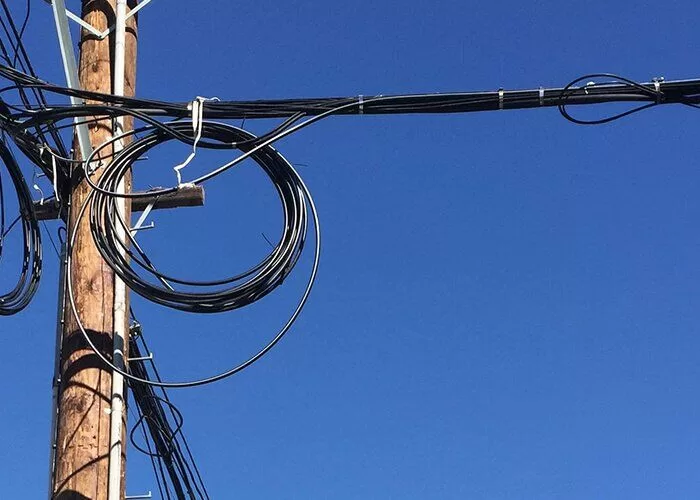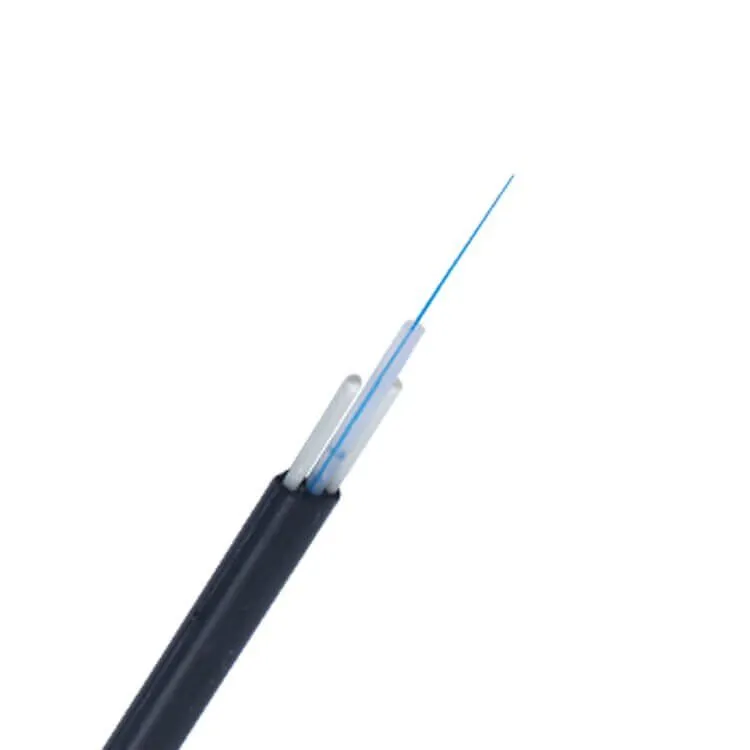
China Aerial Fiber Optic Cable Manufacturer
Pareto Cable is a leading manufacturer of aerial fiber optic cables based in China. We specialize in producing high-quality, reliable cable solutions for various outdoor network applications.

Our Aerial Fiber Optic Cables
Aerial fiber optic cable is designed to hang from poles and withstand outdoor conditions. It’s a cost-effective choice because it can use existing power poles, speeding up installation. This type of cable is best for areas with gentle slopes.
The cable is typically suspended from a steel wire and can be installed by hanging it from brackets on the poles or by wrapping it around them.
Self-Supporting
Hanging Lines Installation
Custom Aerial Fiber Optic Cable

Need a custom aerial fiber optic cable? Look no further. With decades of experience, we can tailor any aerial fiber cable to your exact specifications. From core count (1-288) and fiber type (OS1, OS2, G.652, G.657, OM2, OM3, OM4, single-mode, multimode) to cable structure (unitube, MLT), jacket material (PE, PVC, LSZH), and armoring options, we offer unparalleled customization. Whether you require specific tensile, crush, or span ratings or need cables in lengths from 1km to 6km, our expertise ensures your project’s success.
Aerial Fiber Optic Cable Specifications
Overhead fiber optic cables face many challenges. They can be damaged by severe weather like typhoons, ice storms, and floods. Plus, everyday stresses like wind and temperature changes can weaken the cable. This is why it’s crucial to use cables designed to withstand these conditions. The right specifications are essential to ensure the cable’s reliability and longevity.
| Light Armored Figure 8 | All Dielectric Self Supporting (ADSS) |
|---|---|
 |  |
| This figure-8 cable is designed for outdoor use. It has a strong core made of multiple loose tubes wrapped in aluminum tape and surrounded by a central support rod. To hang the cable without extra wires, it includes a built-in metal strand. | This lightweight, strong cable is made entirely of non-metallic materials. It’s protected by aramid yarn and reinforced with fiberglass (FRP) for durability. Designed for aerial installation without additional support lines, it can span distances of 80 to 800 meters. |
Aerial Fiber Optic Cable: A Comprehensive Guide
1. What is Aerial Fiber Optic Cable?
Aerial fiber optic cable is a type of fiber optic cable designed for outdoor installation on poles or towers. It’s specifically engineered to withstand harsh environmental conditions such as wind, rain, snow, and temperature fluctuations. Unlike underground fiber optic cables, aerial cables are exposed to the elements, necessitating robust construction and protective measures.
2. How Can Direct Buried Fiber Optic Cable Have Great Performance?
Direct buried fiber optic cables achieve exceptional performance through several key factors:
Advanced Design: The cable’s design often incorporates features like loose tube construction, which allows for independent movement of fibers, reducing stress and micro-bending.
Robust Construction: The cable is built with durable materials like steel tape armor and high-density polyethylene (HDPE) outer jacket to protect against physical damage, moisture, and temperature fluctuations.
Water-Blocking Materials: A gel or water-blocking compound is typically used to fill the spaces within the cable, preventing water ingress and ensuring optimal fiber performance.
Fiber Quality: High-quality optical fibers are used to minimize signal loss and attenuation, ensuring clear and reliable data transmission.
3. What are the Applications of Aerial Fiber Optic Cable?
Aerial fiber optic cables have a wide range of applications, including:
- Telecommunications: Long-distance communication networks, broadband internet, and cable TV.
- Utility networks: Power grid monitoring, smart grid applications, and distribution automation.
- Security systems: Surveillance cameras, access control, and intrusion detection.
- Oil and gas industry: Pipeline monitoring, remote sensor networks, and SCADA systems.
4. What are the Advantages of Aerial Fiber Optic Cable?
Aerial fiber optic cables offer several advantages:
- Faster deployment: Installation is typically quicker and less expensive compared to underground cables.
- Easier maintenance: Access and repair are more convenient since cables are visible.
- Scalability: It’s relatively easy to add or replace fibers as network demands grow.
- High bandwidth: Aerial fiber optic cables can support high-speed data transmission.
- Immunity to electromagnetic interference (EMI): Fiber optic cables are not affected by electrical noise.
5. What are the Types of Aerial Fiber Optic Cable?
There are primarily two types of aerial fiber optic cables:
- Catenary wire aerial cable: This type uses a messenger wire for support and is commonly used in CATV applications.
- Self-supporting aerial cable (SSAC): This cable has its own strength members and doesn’t require a separate messenger wire.
6. What are the Materials for Aerial Fiber Optic Cable?
Aerial fiber optic cables consist of several key materials:
- Fiber core: Made of pure silica glass, it carries the optical signals.
- Cladding: Surrounds the core and helps to confine light within the fiber.
- Buffer coating: Protects the fiber from external stresses.
- Loose tube: Encapsulates multiple fibers and provides water blocking.
- Strength member: Provides mechanical strength to the cable.
- Jacket: The outer protective layer, often made of high-density polyethylene (HDPE), protects against environmental factors.
- Armor: Additional protection, such as aluminum or steel tape, may be added for increased durability in harsh environments.
By understanding these components and their functions, you can select the appropriate aerial fiber optic cable for your specific needs.








